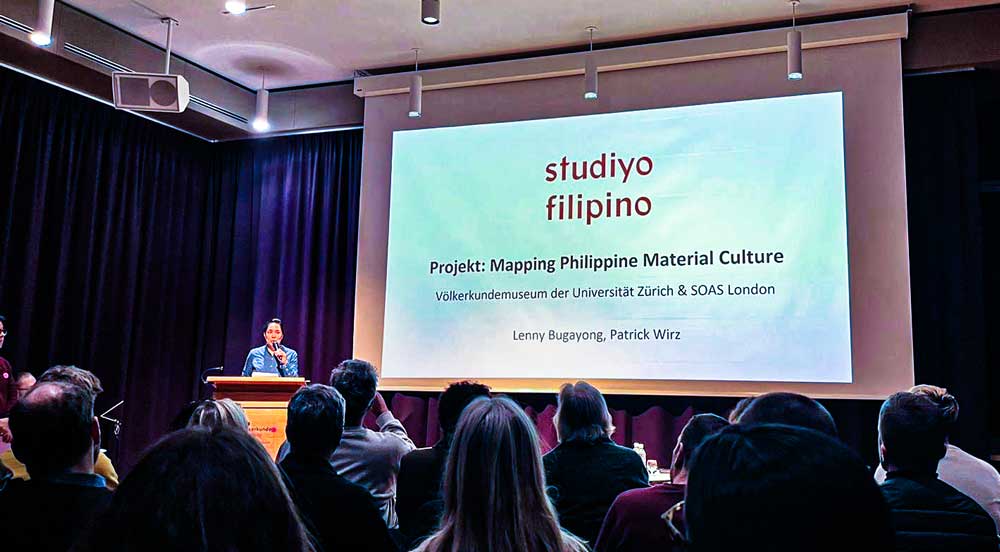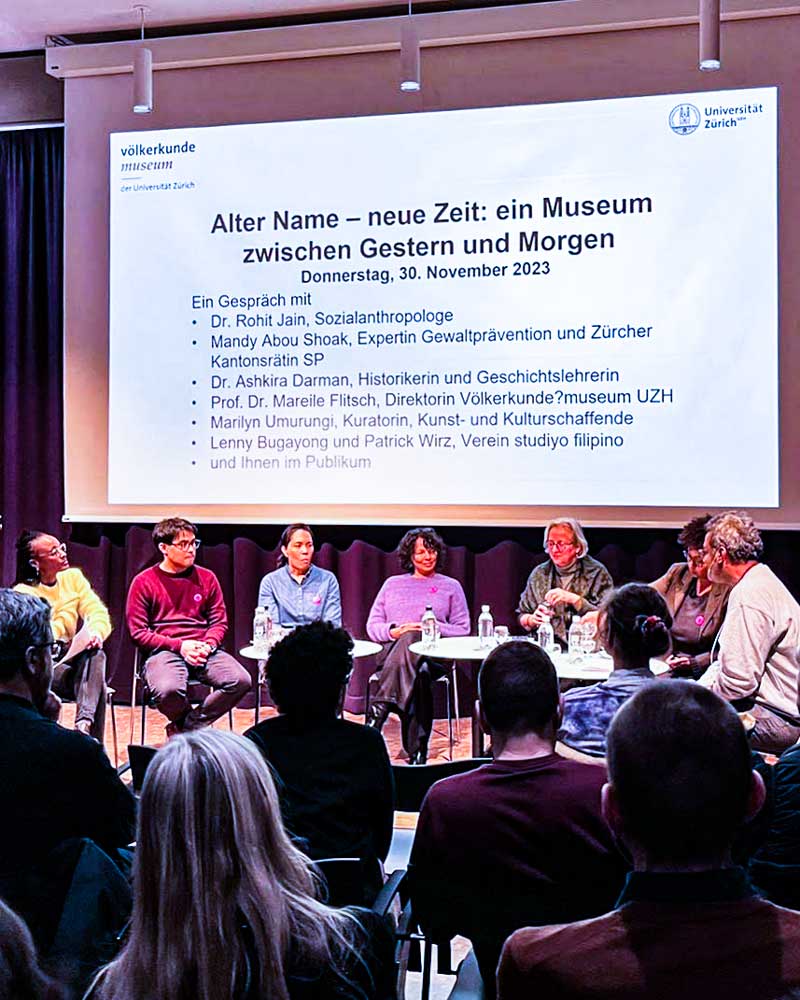On the Purpose of Ethnographic Museums in Diverse Cities

by Lenny Bugayong and Patrick Wirz
On 30 November 2023, studiyo filipino was invited to give a guest commentary during a podium discussion held at the Ethnographic Museum Zürich (VMZ) entitled “VMZ zwischen heute und morgen” (engl. “VMZ between today and tomorrow”). The museum had been faced with challenging questions a few months prior when they set out to find a new and improved name.
Among others, the collective “Vo da” (engl. “From here”) had initiated a debate on how ethnographic collections like theirs could be negotiated and made use of in ways that are more participatory, innovative and critical of racist practices. To continue this debate, the museum organized a podium discussion and invited stakeholders, experts, members of the local community as well as the general public.
Social anthropologist Rohit Jain moderated an exchange between Mareile Flitsch, the museum’s director, and Mandy Abou Shoak (politician) and Ashkira Darman (historian, high school teacher). After interviewing the panelists, further representatives of the local communities were given the floor for commentary, among which were Marilyn Umurungi (art curator and activist) and studiyo filipino.

The interview with Mandy Abou Shoak, whose own heritage has strong ties to Sudan, revealed the inner conflict that some of the ethnographic collections can stir for visitors, especially if these collections had been obtained in contexts of violence. Ashkira Darman herself admitted that she hardly felt a personal interest in visiting the museum herself, but that she did see the value of taking her students there, if only to discuss with them the complexities and colonial entrapments behind such collections.
During their 8-minute input, studiyo filipino presented the project Mapping Philippine Material Culture (MPMC) and elaborated on why they see their collaboration with the VMZ as a means for making the museum more relatable to the local community. During the first half, Patrick Wirz outlined the step-by-step process from a technical point of view and also pointed out the additional challenge of having to translate the original entries from German into English. Lenny Bugayong then embedded the project’s significance in the context of Switzerland as an immigrant society and what the digitization of the collection means for the Filipino community in particular.
Not only has the work of studiyo filipino been crucial for - quite literally - putting the Zurich collection on the MPMC map, the project has also shed light on the city’s historical ties to the Philippines. After all, the Filipino community makes up the second largest Southeast Asian community in Switzerland; meanwhile, the Philippines hosts the second largest community of Swiss expatriates in Asia. Following a treatise by art curator and activist Marilyn Umurungi, who called for various forms of collaboration between museums and the societies which they exist in, studiyo filipino joined the larger podium, which then also took questions from the audience.
As a practical and hands-on example of what the museum’s efforts in becoming relatable to a multi-ethnic Swiss society could look like, their collaboration with studiyo filipino within the larger framework of the MPMC garnered much appreciation during the ensuing reception. The association is currently also in talks with museums in the Swiss cities of St. Gallen and Basel, whose collections might soon be added to the MPMC platform as well.